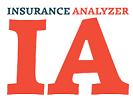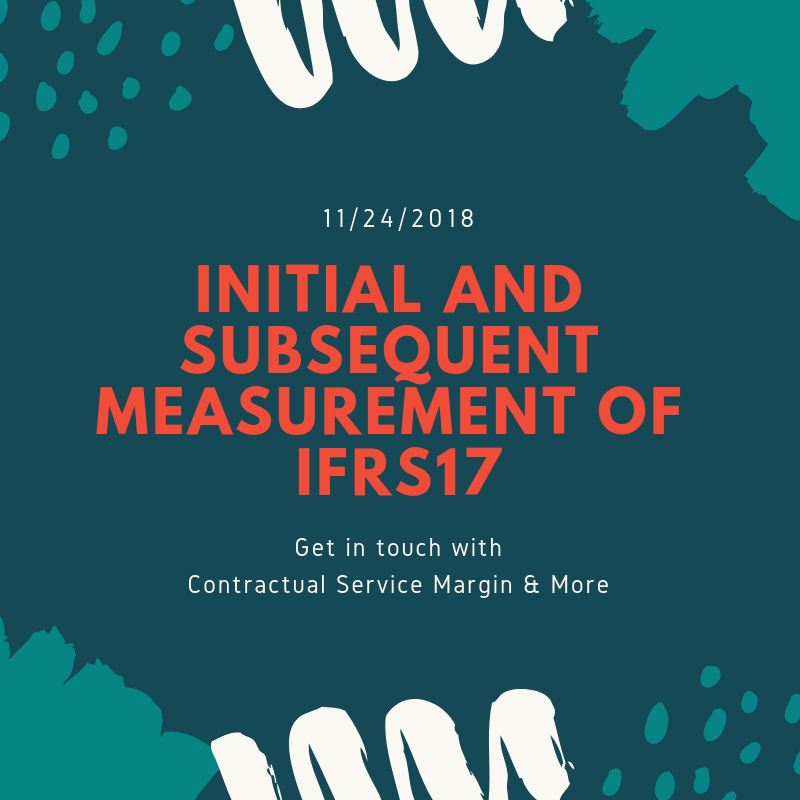How to do the measurement of IFRS17? Find out more about the initial measurement and subsequent measurement of IFRS17 for insurance companies.
Contractual Service Margin at initial measurement
The contractual service margin (appreviated to CSM) is a component of the carrying amount of a group of insurance contracts. It represents the estimated profit, that had not been realized yet but that is expected to be realized to the insured person within the insurance contract period in exchange for the promised insurance service in the event of claims. Therefore, the creation of an estimated profit avoids an early profit recognition in the Profit and Loss statement of the insurance company at initial recognition.
The different components of the contractual service margin calculation are the following:
- Present value of the expected cash inflows ,
- Present value of the expected cash outflows,
- Adapted by the risk margin.
In this case, the contractual service margin is expected to be profit making. In case of onerous groups of insurance contracts the insurance company has immediately to recognize a loss in the P/L statement at initial recognition. Groups of insurance contracts are onerous if the expected cash outflows are higher compared to the expected cash inflows. This expected cash outflows represent the loss amount that has to be recognized immediately at initial recognition.
This aspect illustrates that estimated profit is treated differently compared to estimated loss. Estimated loss has to be recognized directly as loss-making in the Profit and Loss statement whereas estimated profit is first booked to the contractual service margin in the balance sheet. It is only recognized in P/L over the coverage period of the group of insurance contracts at the end of each reporting period reflecting the provided service per period.
Subsequent measurement while applying IFRS 17
The carrying amount of a group of insurance contracts at the end of a reporting period is the sum of liabilities for future insurance coverage and the liability for incurred claims. It has to be composed at the end of each subsequent reporting period.
The liability for future insurance coverage represents the fulfillment cash flows and the remaining contractual service margin.
The liability for incurred claims relates to insured events. Insured events have already been incurred but that have not been settled yet. Consequently, these liabilities comprise the part of the fulfillment cash flows that refers to past service.
Changes in estimates that refer to current or past service have to be recognized immediately as profit. Discount rate changes have also to be recognized as profit in the reporting period in which they occurred. Or they can be recognized partly in the profit or loss statement and in the other comprehensive income (appreviated to OCI).
Subsequent measurement in regards to the fulfilment cash flows and risk margin
At the end of each reporting period the cash flow estimations have to be verified and adapted in a way to best reflect a measurement that is harmonized with the current level of information at the end of the reporting period but also in regards to the changes occurred within the reporting period.
If the changes in cash flow estimations relate to current or past service, then those changes have to be recognized as profit in the profit and loss statement. Those changes also include changes of the liabilities for incurred claims. For changes that do not refer to received premium for future service, experience adjustments have to be recognized as profit.
Thus, it is relevant to consider the timely reference of changes in estimates, since future best estimated cash flows referring to future service do not have to be recognized in the profit or loss statement. But they adjust the contractual service margin of the balance sheet.
The same principle applies to the adaptation of the risk margin in regards to non-financial risk. Changes to the risk margin for current or past reporting periods are to be recognized as profit in the P/L statement at the end of the reporting period. Whereas changes relating to future service are to be recognized against the contractual service margin.




